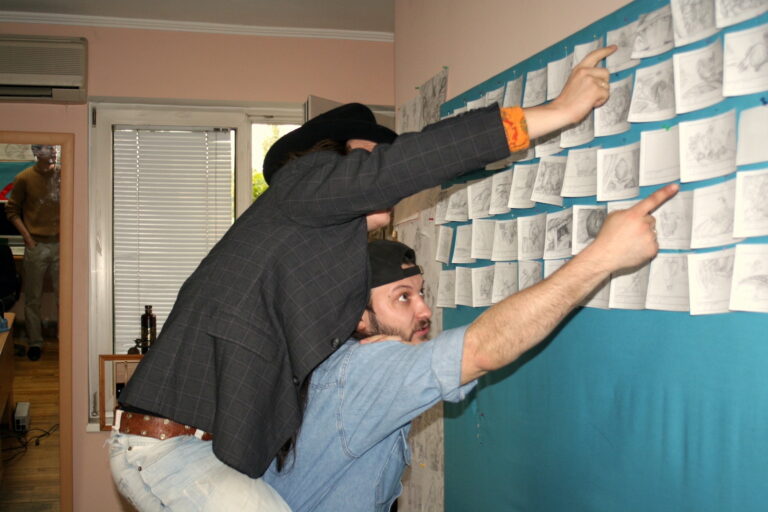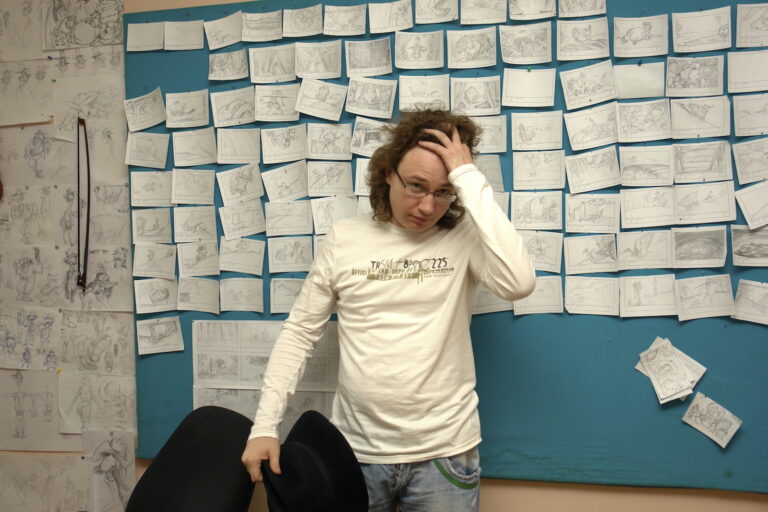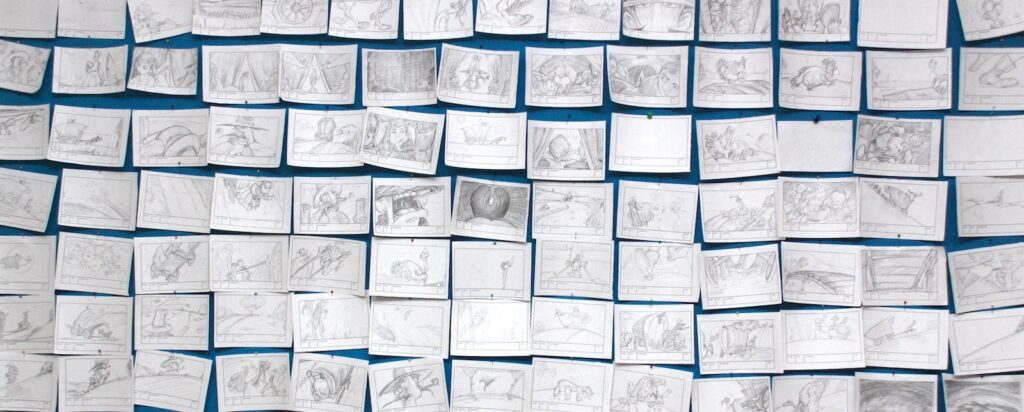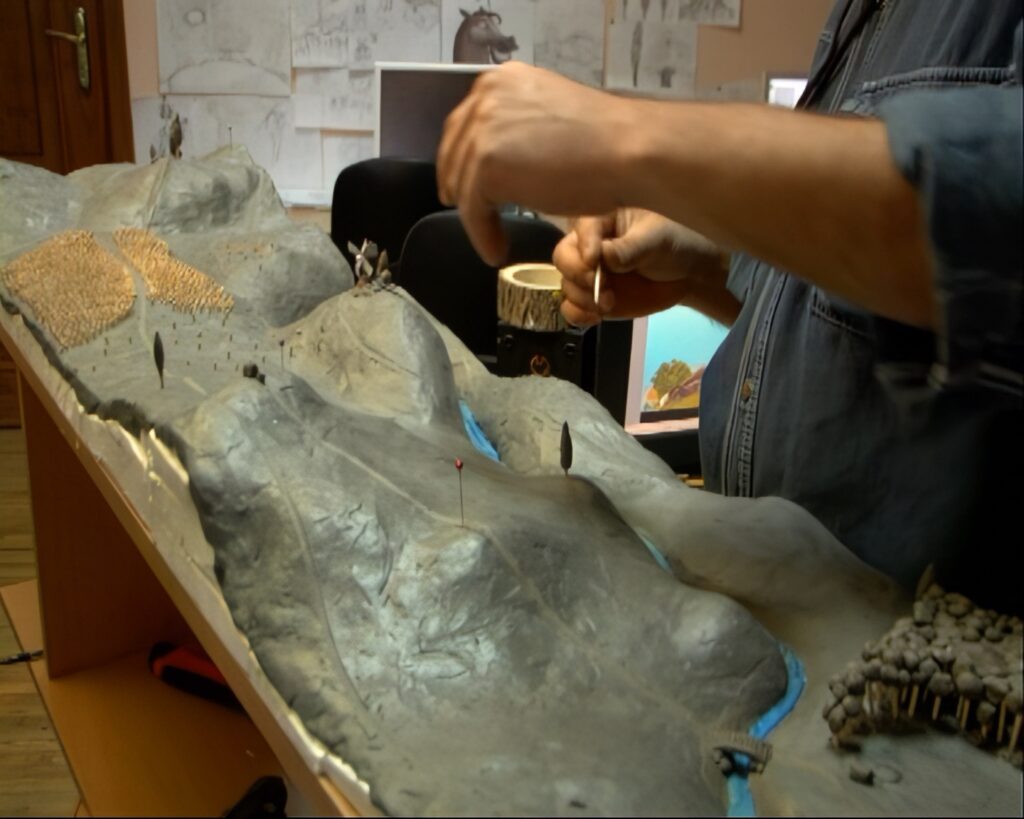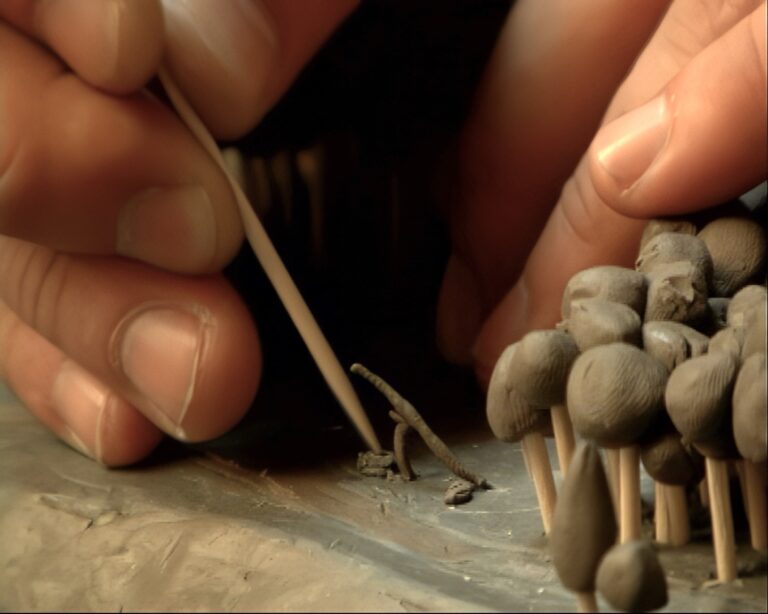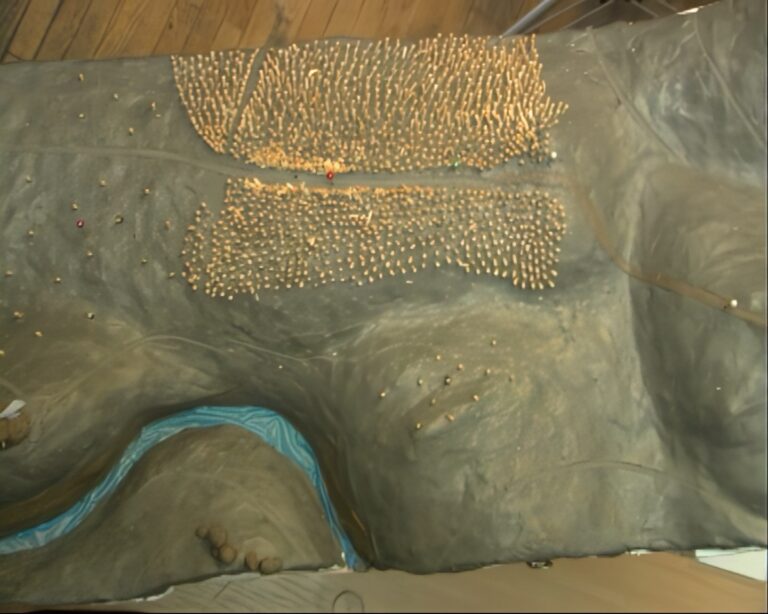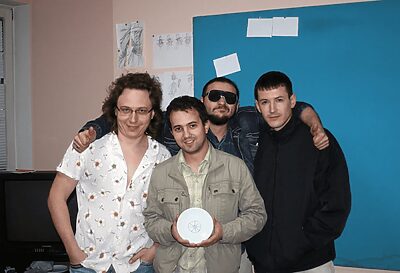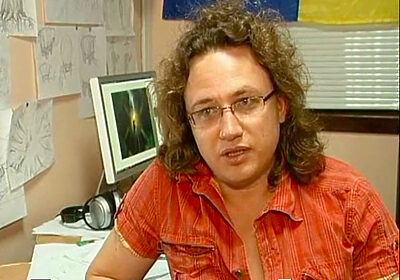Stick, stick, cucumber
In any movie, a very important director’s task is the storyboard — a sequence of drawings that serves as a visual illustration of a future cartoon, so to say, a paper version of it. It helps the director to plan scenes for the next movie or video in advance to the smallest detail.
It is known that a movie or cartoon consists of separate plans: large, general, middle, distant, etc. So, in the storyboard, each upcoming plan is replaced by one or more drawings (to show camera movement). First, the director draws “cucumbers”, that is the “stick, stick, cucumber” style drawings. Next, the artists create a storyboard of the future film.
At this stage it is important to see the integrity of the film, to check if everything is logical, if the dynamics are not lost, if the storylines are worked out, etc.
We developed our own form for the plans, the size of A6 each. During the whole stage of work on the storyboard we printed over 1,000 such forms.
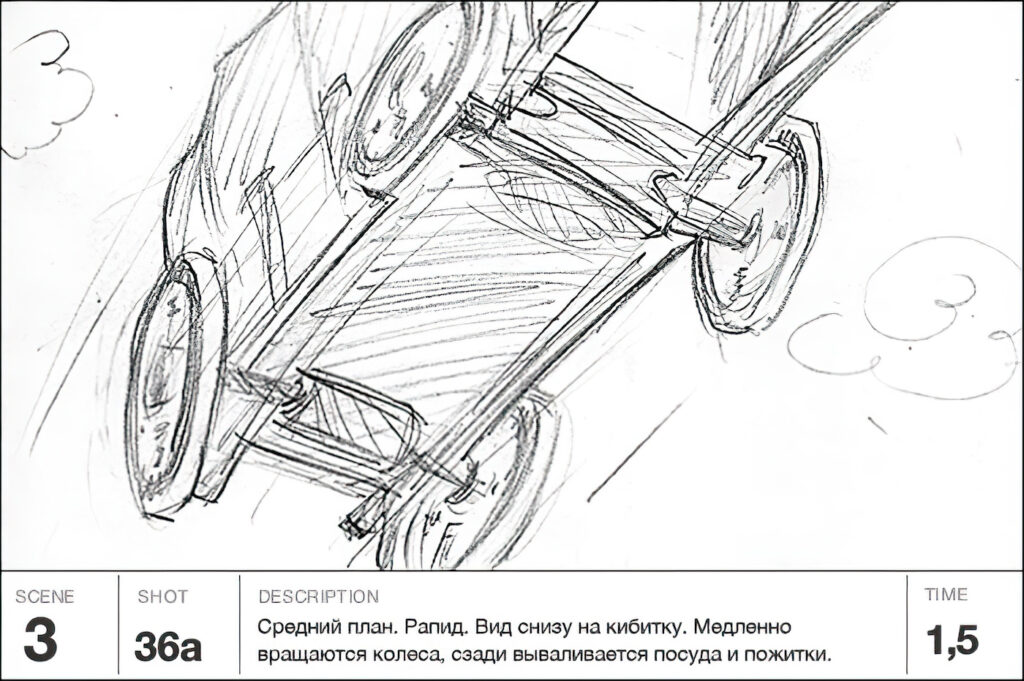
Scene — Scene Number. A scene is a piece of film united by a place or action. For example, “spending the night in the woods”. A scene consists of shots.
Shot — Shot Number. In movies, it is a piece shot in one take between “Action!” and “Cut!”. After approving the storyboard, all the shots are numbered. The letter “a” means that in this shot we see the beginning of the motion, and there is another plan with the letter “b”, where the motion will continue.
Description — Shot Description. It is used by the Director to write what is happening in the current shot. The size and musical effects are also specified.
Time – The approximate duration of the shot. It is specified in seconds.
There are more than a hundred of these shots in our cartoon. And each of them is a separate 3-5 second cartoon. So, there is a lot of work ahead of us. In the meantime, we have fun and we move the shots from place to place, trying to find the most dramatic combinations:
Heaps of plasticine
Since our story is a roadmovie, or journey, it was important for authenticity that we sync up in order to understand where and what was going to happen. But each of us had a different idea of the scenery in the background of which the cartoon takes place.
In order to bring all visions of the landscape together it was possible to discuss and draw or go into nature and take pictures. But the team decided not to take the easy way and therefore decided to embody the landscape in artistic modeling.
It took us heaps of plasticine, bundles of matches, a lot of time, and lots of nerves to make the landscape. It turned out, in our opinion, very, very pretty. As a result, we got a plasticine landscape, a feeling of deep satisfaction, a lot of positive emotions and a distinct idea of the location.
Just take a look for yourself – now all the animators have an understanding of cartoon space and timing, and the director and cameramen have good perspectives that don’t contradict the narrative.
But the main value of it was that we had so much damn fun.
Just like when we were kids 🙂
